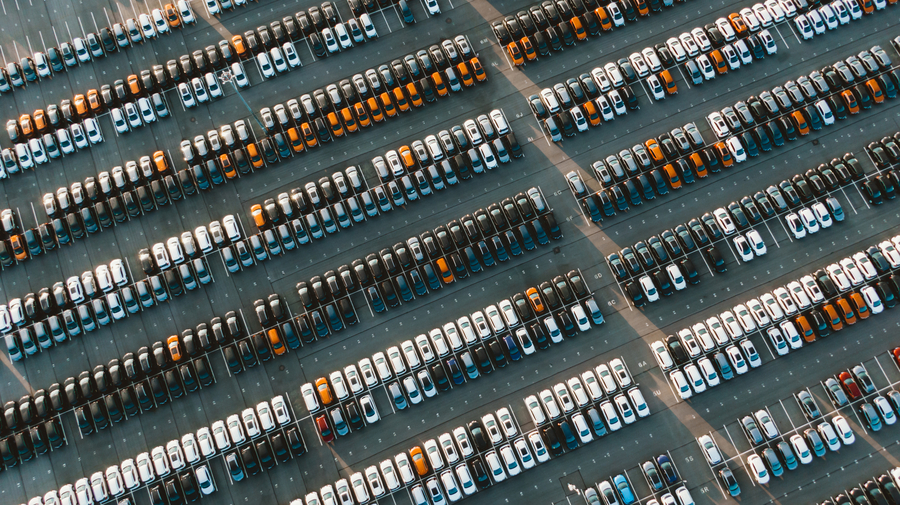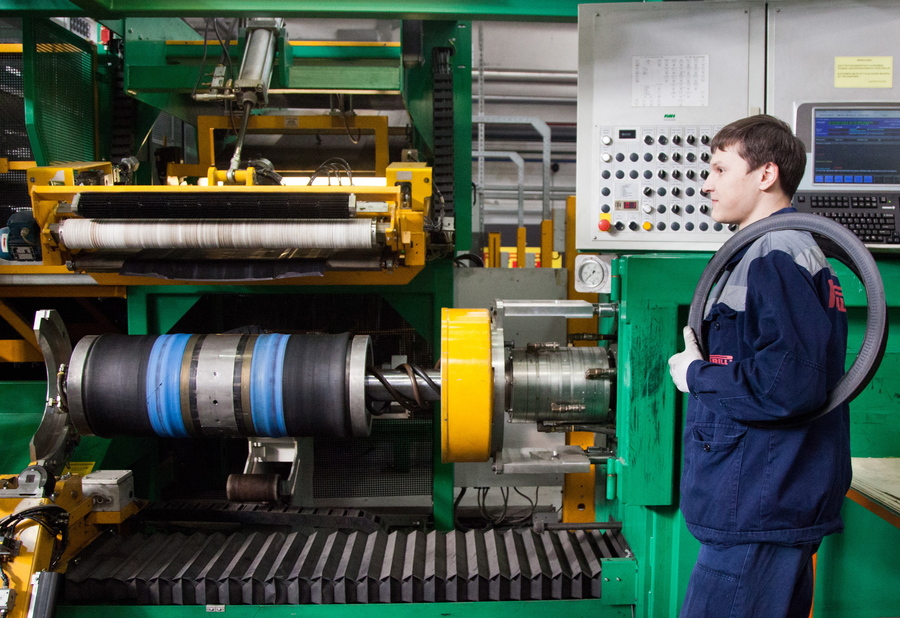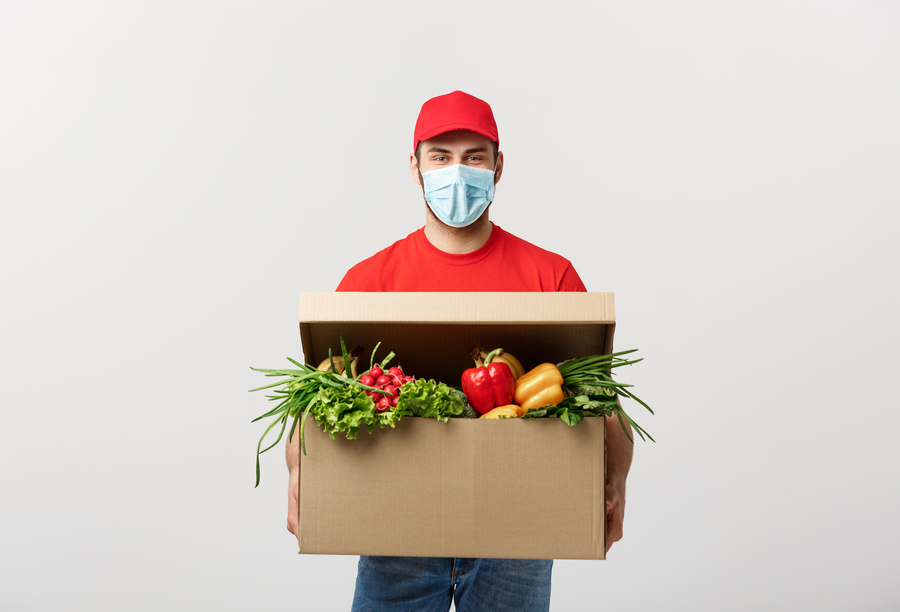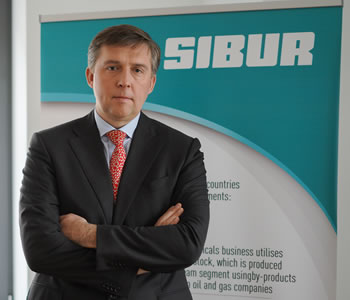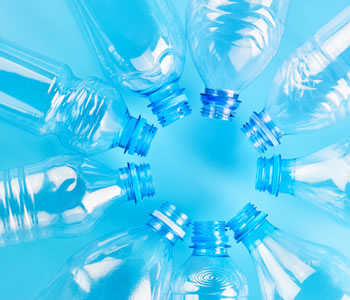While the onset of the pandemic saw demand for polymers fall in many sectors, a shift towards new markets allowed Russian suppliers to increase their polymer production by 17%, to 10.2 million tonnes. Experts are now forecasting a growth in plastic consumption for 2021.
“The global demand for polymers fell by 17 million tonnes in 2020, due to the coronavirus pandemic”, explained Dmitry Konov, Chairman of the Management Board at SIBUR Holding, during a December meeting with President Vladimir Putin on the development of the Russian petrochemical industry. The reduction in the consumption had a knock-on effect on the industry’s operating rates, which stood at around 85% at the beginning of December. While demand will continue to recover, the Company believes that producers will not be able to make up for lost volumes until at least 2025.
The reduction in the consumption has a knock-on effect on the industry’s operating rates, which currently stand at around 85%
The negative momentum in the petrochemical industry persisted between January and September 2020 due to the outbreak of the COVID-19 pandemic and subsequent restrictions. It was during this period that demand for bulk polymers, such as high-density polyethylene (HDPE), linear low-density polyethylene (LDPE) and polypropylene, fell most dramatically. The automotive industry saw the largest fall in polypropylene consumption (a contraction of over 60%). The drop in demand for low-density polyethylene (LDPE), PVC-S, PVC-E and EPS was less severe, and demand for general purpose polystyrene even grew by 5%. Lockdowns led to increased demand for household appliances and takeaway food, and these two sectors account for a significant proportion of total polystyrene consumption.
The production of these polymers has increased significantly throughout the year. A total of 1,883 thousand tonnes of polypropylene was produced, compared to 1,442 thousand tonnes in 2019 (an increase of 31%). This increase was mainly due to the ZapSibNeftekhim (SIBUR) petrochemical complex coming online, with a capacity of 1.5 mtpa of polyethylene and 0.5 mtpa of polypropylene.
According to Market Report, Russia’s total polyethylene output stood at 2,987 thousand tonnes in 2020, an increase of 61% on the previous year (1,857 thousand tonnes). Production volumes of high-density polyethylene reached 1,825 thousand tonnes (up 90% year-on-year), low-density polyethylene output stood at 634.8 thousand tonnes (down 1% year-on-year), while linear low-density polyethylene production reached 527.4 thousand tonnes (up 107% year-on-year).
The automotive industry: there is life after the crisis
The pandemic represented a severe crisis for the automotive industry, one of the major consumers of polypropylene and ABS plastics. Just four months in 2020 saw higher year-on-year sales of new cars, and according to Rosstat, the production of passenger cars fell by 17.5% for the full year, to 1.26 million units. The production of trucks stood at 142 thousand units, representing an 8.7% decrease on the previous year. The drop was due mainly to massive production shutdowns in spring as carmakers suspended operations as part of measures to prevent the spread of the coronavirus.
The car market has experienced one of the biggest declines.
As a result, polymer consumption in the automotive industry fell by 22% in 2020. In terms of sales, however, the Russian automotive market performed better than almost any other globally in 2020, moving into fourth place in Europe.
According to Market Report, Russia’s total polyethylene output stood at 2.9 million tonnes in 2020, an increase of 61% on the previous year
Sergey Udalov, Executive Director of analytics company Autostat, remarked that the problems in the automotive market first appeared back in 2019, against the backdrop of a weakening economy and the resulting decrease in consumers’ buying power. He noted that vehicle demand remained low at the start of 2020, before the rouble depreciation precipitated a surge in demand for passenger cars in March. A significant portion of this demand involved already-available cars being bought up at a lower price by dealers on expectation that prices would increase. Higher buying activity was also fuelled in part by the uncertainty associated with the start of the pandemic. However, despite this high demand, sales evaporated in April and May (when they have traditionally been strong), as dealerships were forced to close. At the same time, COVID-19 restrictions precipitated the collapse of the global supply chains for cars and components, bringing about a shortage in the Russian market and causing problems for assembly lines. “In response to this situation, the Russian Government introduced a package of measures after lockdown was lifted to support the automotive industry, including subsidised loans for passenger cars, and state procurement of commercial and heavy-duty vehicles,” the expert explained. Tenders were also fast-tracked as part of this package of subsidies, initially planned for 2021 and 2022. Meanwhile, price increases in the truck segment due to a weaker rouble, led to a growth in demand for vehicles from domestic producers, such as KAMAZ. Heavy-duty vehicles were in-demand, including due to a pick-up in construction activity.
“Today, as before, the demand for passenger vehicles exceeds supply, which bolsters prices. At the same time, however, sales of commercial and heavy-duty vehicles will remain low in the near-term, due to the challenges currently facing private business,” continued Sergey Udalov. According to the Association of European Businesses (AEB) forecast, 1.6 million passenger and commercial vehicles will be sold in Russia in 2021. This amounts to a 2.1% increase on the previous year. “Nevertheless, the market is unlikely to recover to 2019 levels until 2023 at the earliest,” Dmitry Konov explained at the meeting on the development of the petrochemical industry.
The tyre business: recovery on the horizon
The output of wheels, tyres and new rubber bags in Russia fell by 9.2% during the year, to 54.9 million units, leading to a collapse in the demand for synthetic rubber and related polymers. Nizhnekamskneftekhim, a major Russian synthetic rubber supplier, stated in its report that industrial giants such as Continental, Goodyear, Bridgestone, Pirelli, Cooper Tire, Hankook, Nokian Tyres, and over 110 other tyre producers worldwide completely halted production between March and May last year. Meanwhile, disruption to logistics chains led to warehouses being overstocked. The company estimates that, in total, the production of tyres will fall by 45 to 50 million units this year.
The International Rubber Study Group (IRSG) estimates that global demand for rubber in the tyre sector fell by 10.2% in 2020, but only contracted by an average of 5% in other sectors, due in part to the increased demand for gloves and other medical products amid the coronavirus pandemic. Total synthetic rubber consumption fell by 7.9% to 14 million tonnes. However, the IRSG predicts that 2021 will already see a significant recovery in the global markets for both natural and synthetic rubber (7.1% and 7%, respectively), driven by a strong recovery in the commercial vehicle segment.
In 2020, tyre production in Russia fell by 9.2%, which had a knock-on effect on the consumption of synthetic rubbers. Photo: Kristina Brazhnikova/TASS
Construction: the situation is beginning to stabilise
Construction is another industry hit the hardest by the coronavirus pandemic in 2020, with the number of new-build properties commissioned in the Russian market falling by over 5%. The sector is a major consumer of PVC, polyethylene pipe, expandable polystyrene (EPS) and polypropylene.
Polymer consumption in the automotive industry fell by 22% in 2020. In terms of sales, however, the Russian automotive market performed better than almost any other globally in 2020, moving into fourth place in Europe
One of the main reasons for this contraction was the lockdown in Moscow and the Moscow region, which halted construction between 13 April and 18 May. Similar restrictions were also introduced in 50 other Russian regions. As a result, residential construction contracted by a record 30%, with developers forced to turn to the government for help. In the first half of the year, the new-build volumes in Russia fell by 11.4% year-on-year, to 27.9 million square metres.
August, meanwhile, saw a growth in the number of new apartment blocks and private dwellings commissioned, following Vladimir Putin’s decision to extend the subsidised mortgage programme introduced in April (which offers loans at a rate of 6.5% per annum), until 1 July 2021.
Igor Gretsov, CEO of GPGroup, thinks that currently the main drag on the construction industry is labour shortage, leading to higher wages for construction workers. If solutions are found in the near-term to unlock the influx of economic migrants, then the construction industry should stabilise in 2021 and 2022. In terms of demand for polymer materials in the industry, Andrey Zimonov, Head of Construction at Granelle Group, stated that the decline in coronavirus cases and the gradual resumption of normal economic activity have meant the situation is beginning to stabilise. An increase in the price of metal products has been another factor driving plastic’s recovery. It is impossible to rule out a minor contraction in demand for polymer materials (up to 5%) in the short term, due to last year’s fall in total construction volumes. However, the expert forecasts subsequent market growth of 10% to 12%. “Our industry remains a driver of the national economy,” Andrey Zimonov said. “We will increase our consumption of innovative products, such as polymer pipe in our water pipeline and sewage systems. This allows utility companies to provide services at a lower cost. Market activity will start to grow at an even faster pace once the investment programmes suspended during the pandemic are resumed, and the government increases its spending on utility and transport infrastructure projects.
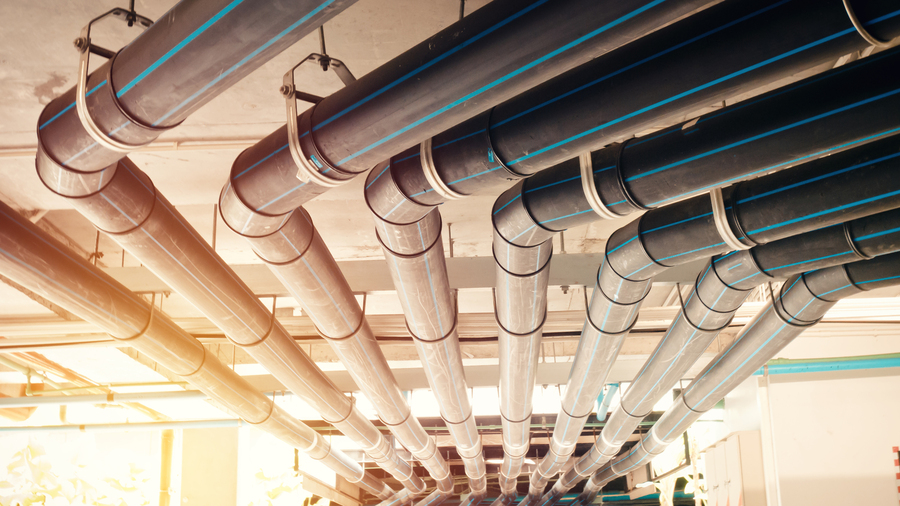
Construction players expect the market to recover, which means that polymer products will see demand from the industry.
Healthcare: a challenging year ahead
According to various estimates, the production of medical products worldwide fell by 3.2% year-on-year in 2020 despite the unprecedented demand for personal protective equipment (PPE), laboratory diagnostic supplies and intensive care equipment. The main causes of this contraction were lockdown, supply chain disruptions and the repurposing of some operations, which caused problems for the supply of components. Production volumes of medical equipment in Russia fell by 5.2% year-on-year in 2020; nevertheless, it was a successful year in terms of polymer consumption. In particular, high demand for medical masks and coats (consumption of which increased by an average of 40%) supported the market for polypropylene used in the production of non-woven materials. Between April and May, many non-core businesses, such as Plastic (Uzlovaya, Tula Region) or Polymatiz (a Nizhnekamskneftekhim subsidiary), refocused some of their capacity towards the production of non-woven polypropylene masks.
According to the Association of European Businesses (AEB) forecast, 1.6 million passenger and commercial vehicles will be sold in Russia in 2021. This amounts to a 2.1% increase on the previous year
According to the Ministry of Industry and Trade of the Russian Federation, production volumes of medical masks in Russia increased by 20 times from 600 thousand units per day at the start of the pandemic, to 19 million units by November. The number of businesses involved in this sector rose from 18 to 86. There was also high demand for polypropylene, polyethylene and polystyrene packaging for medical supplies. Other plastics were also in-demand. Experts have forecast that the Russian medical manufacturing industry will not only recover in 2021, but could even grow by 5% to 6% compared to 2020.
According to a DSM Group estimate, the Russian pharmaceutical market grew by a total of 6.1% to RUB 2 trillion in 2020. DSM Group forecasts that the market will grow by a further 4.7% to RUB 2.13 trillion in 2021. Meanwhile, while price-wise the market dynamics was positive (end-user prices increased by 9.9%), the amount of pharmaceutical product packages sold fell by 4.5%. DSM Group also noted a surge in over-the-counter drug sales at the start of 2020 (a 26.3% month-on-month increase to RUB 100.6 billion in March), followed by an even sharper 31.1% fall the following month, to RUB 87.5 billion. During the remainder of the year, sales were mostly flat year-on-year, with the exception of December, which saw a 19.2% year-on-on increase in sales to RUB 117.2 billion.
DSM Group CEO, Sergey Shulyak, explained that the next two years will not provide the right conditions for active growth in the pharmaceutical industry, and there will be no increase in the demand for plastics in this sector as a result. He added that the medical packaging sector is beginning to show signs of transitioning from glass to polymers (in vial production, for example), but cautioned that this would be a very slow process. “Due to the current economic climate, nobody is willing to shut down their existing production of glass containers in order to roll out new polymer packaging products,” the expert explained. It is also worth noting that price, rather than the convenience of packaging, is currently at the forefront of consumers’ minds. The expert also noted that the surge in demand for other products such as PPE was short-lived, while the growth in consumption of non-woven materials, driven by higher mask and protective coat sales, would not be enough to offset the losses caused by the fall in output of other pharmaceutical products.
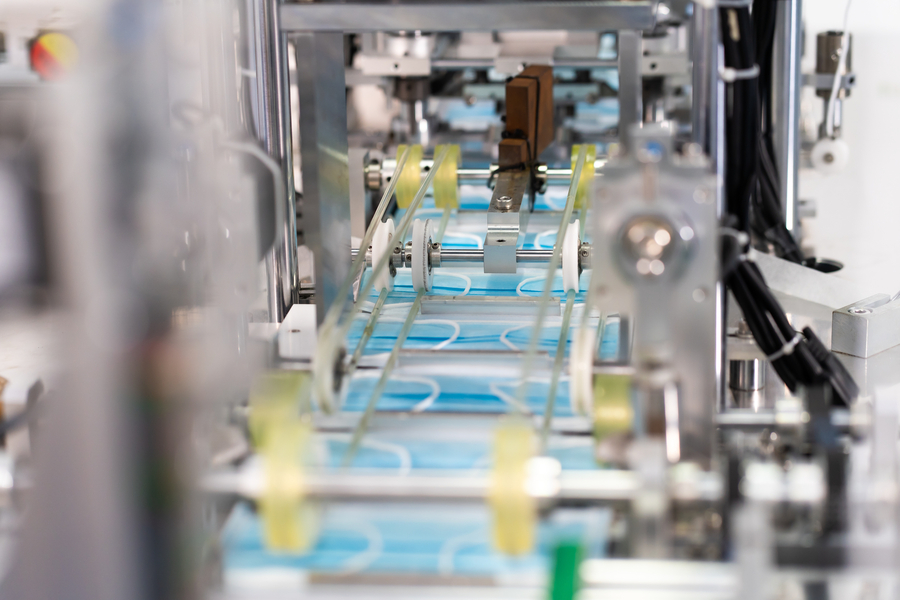
Despite 2020’s strong growth in demand for PPE, the global production of medical products fell.
Nikolay Bespalov, Head of Business Development at RNC Pharma, echoes Mr Shulyak. In his view, 2021 will be a very challenging year for pharmaceutical industry players. In the retail market, consumption is constrained by the overhang of existing inventories built up by consumers over the prior year, as well as low household incomes. Realistically, we are likely to see the market contract by 3% to 5%, if the COVID-19 situation and macroeconomic environment remain stable.
The IRSG predicts that 2021 will already see a significant recovery in the global markets for both natural and synthetic rubber (7.1% and 7%, respectively), driven by a strong recovery in the commercial vehicle segment
The food industry: an eco trend
The food packaging segment has posted strong growth during the COVID-19 pandemic. Consumption in this segment peaked following the introduction of restrictions in April, and over the second half of the year, production of polypropylene food packaging grew by an average of 20%. Industry players point out that the slump in demand across other sectors meant that the food industry accounted for 70% to 75% of total polypropylene consumption in Russia. The biaxially-oriented polypropylene (BOPP) sector increased by 12% to 17% during the pandemic. Meanwhile, experts have identified an emerging trend towards cheaper containers and packaging. Analysts predict that the demand for packaging with a longer self-life will not decline over the coming years. On the contrary, many producers will see growing demand for flexible packaging with strong barrier properties, and the ability to preserve products for an extended period of time.
The COVID-19 pandemic has also caused a temporary decline in the relevance of environmentally friendly packaging, with the eco trend taking a backseat as the first wave peaked. The overarching trend for environmental friendliness remained, however, and has already strengthened considerably by the summer of 2020. More and more consumers are choosing goods and brands which are seen as responsible and environmentally conscious producers. Oraz Durdyev, Legal and Corporate Affairs Director at AB InBev Efes (producer of BUD, Stella Artois, Velkopopovický Kozel and Corona Extra), explained that the demand for plastic packaging is currently being shaped by the rise of responsible consumption. “As a major Russian beer producer and a responsible corporate citizen, we are also focused on optimising our primary packaging in a way that will minimise our impact on the environment, while maintaining the quality of our products. For example, we are constantly striving to reduce the weight of our plastic preforms. In so doing, we were able to cut our plastic consumption by 440 tonnes last year. Of course, this does not mean that we are completely moving away from plastic. Using this material sustainably means disposing of it properly and maximising the use of recycled materials in the production process. Current GOST standards clearly prohibit the use of recycled PET in food containers. However, the experience of other countries, as well as a vast body of research, confirm that this type of packaging does not have any effect on the quality, safety or taste of a product, when it contains recycled materials. Therefore, we expect that the existing obstacles will be removed, speeding up our transition to a circular economy”.
FMCG: the impact of working from home
In 2020, as many employees transitioned to remote working, the Russian FMCG market grew by 3% in monetary terms, according to actual annual retail sales data collected by NielsenIQ (formerly Nielsen). Across all quarters of the year (excluding Q1), market growth was driven entirely by increases in average prices.
The company explained that the panic buying in the first quarter of 2020 sparked hopes in the Russian FMCG market for a recovery in demand following many years of stagnation. In five major Western European countries, for example, the prolonged closure of restaurants and cafes led the FMCG market to grow from 1% in 2019 to 7% in 2020. However, the impact of lockdown on the Russian FMCG market only lasted a few months, which, combined with falling household incomes and customers moving online, meant market performance was weaker than in 2019.
Online FMCG sales is just one record-setting sector.
Certain segments of the offline FMCG market saw accelerated growth, with the alcohol and food markets growing by 6.1% and 3.5%, respectively. At the same time, the market for non-food products experienced a contraction of 3%, with sales of hair products falling by 7.5%, skincare products by 7.8%, and shaving products by 6.5%. Sales of household cleaning products saw accelerated growth, however, and increased by 9.4% on the previous year.
Construction is another industry hit the hardest by the coronavirus pandemic in 2020, with the number of new-build properties commissioned in the Russian market falling by over 5%
The online FMCG sales market posted a three-digit growth of 102%. According to other estimates, the Russian e-grocery market (which includes the online sales of food products and FMCG) grew from RUB 43 billion to RUB 135 billion in 2020 (including VAT).
Market research company GfK also estimates that the household appliance and electronics sector grew by 16% during the first nine months of 2020. The rate of growth in this sector is triple that seen in Europe.
Outlook
Despite the opposing trends across different industries, market players and analysts expect overall plastic consumption to increase going forward. Andrey Kostin, CEO of the Industry Research Centre, thinks that 2021 will be a good year for petrochemical markets. “Once restrictions are finally lifted, consumption will increase significantly, including in the automotive and synthetics industries,” the expert said.
Elena Morozova, CEO of PTPA, believes the actions of OPEC+ will now be a major driver, including a timeframe for lifting the existing oil production restrictions. However, it is unlikely that we will see investment in oil and gas projects recover to pre-pandemic levels until at least 2022. The expert noted that for the Russian economy the current situation could become a driver for increased import substitution.
The Russian and global polymer markets are facing a dramatic situation, with prices for polymer products increasing since the second half of 2020. This is due to rising demand for polymers; fluctuations in global hydrocarbon prices, which determine prices for petrochemical feedstocks; the suspension of operations during lockdown; and logistical issues around international supplies. These price increases are highly concerning for Russian plastic processors. Alexander Sobko, an analyst at RUPEC, predicts that polymer prices may start to stabilise in the near future. There is still excess capacity in the market, and the shortage was mainly due to short-lived factors.
Download PDF

